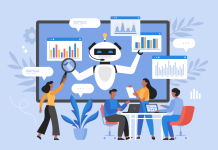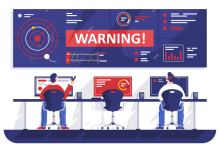
Most centers have done an admirable job providing options for customers to self-serve. In fact, they’d love it if customers could handle all of their service needs using automated tools. Yet there remains a host of circumstances in which the need for dialog remains strong. Whether customers opt for assisted service or land there after attempting to self-serve, data on the customer and contact needs to be used every step of the way to ensure a personalized interaction focused on quick, easy, and complete resolution.
For example, when customers fail at self-service, the self-service channels could determine their assisted service channel. An IVR contact leads to a phone call. Web leads to email or chat. Mobile leads to text or call. If they were already identified and verified, their data should travel with them or be accessible in a data base at the next landing point. Information on the transaction should also be present so customers don’t have to repeat it. This treatment minimizes the customers’ level of effort and the handle time. It also optimizes the customer experience.
Some customers just don’t like self-service. Based on past behaviors (e.g., pressing 0 repeatedly in IVR), you could capture their aversion to self-service in their account record route them directly to an agent. Of course, you’d need Automatic Number Identification (ANI) or an account number entry to identify them. Most customers would gladly enter the latter if they knew it would hasten their interaction with an agent. As a bonus, entering account numbers and passwords reduces the time needed for the Identify and Verify (ID&V) process—a bonus for all concerned.
If a contact is too complex, urgent or sensitive, the goal should be to connect customers with agents as quickly and easily as possible. As noted above, if they tried self-service, any information they provided should be used to route to a skill set capable of assisting them with the process from which they exited. If not, use account data to determine if there is a transaction in process or obvious issue based on their account status.
Three critical technology enablers stand out to deliver an exceptional customer experience.
- Leveraging Data: Use data to customize menus, messages, and routing for specific customers or situations. Associating data with a contact is the enabler for identifying and verifying customers, routing them to appropriately skilled resources, and launching conversations based on scripts and business rules.
- Using Business Rules and Defining Workflows: Business rules provide the logic that determines actions taken based on the input data—e.g., routing, contact handling, and more. Workflows simplify and automate processes and take the guess work out of how to deliver a consistently great customer experience.
- Integrating Channels: Channel integration enables the customer to move from self-service to assisted service, and from one channel to the other easily and seamlessly. Omnichannel technology basically packs the customers’ bags with data to take with them on their journeys. This data makes the next stage of the interaction simpler and delivers a better customer experience.
Fortunately, the latest architectural innovations by contact center technology suppliers make it easier to leverage data, integrate channels, and define workflows. Vendors offer open development platforms that they, their partners, or even their customers can use to build modular tools to gather and use data. The interfaces on these systems can make it fast and easy to develop and pilot applications.



